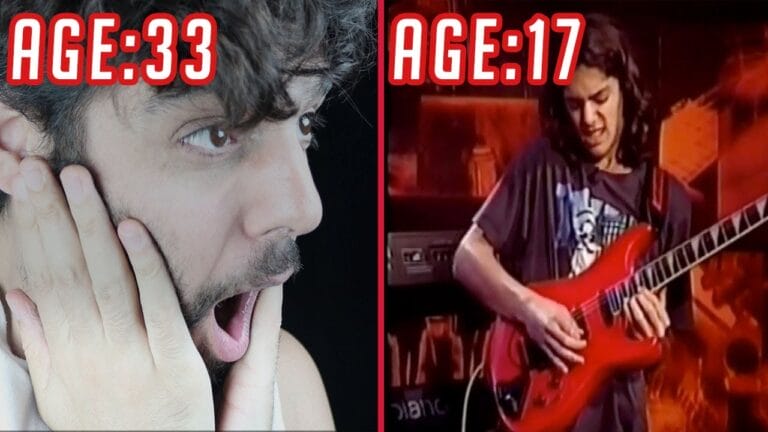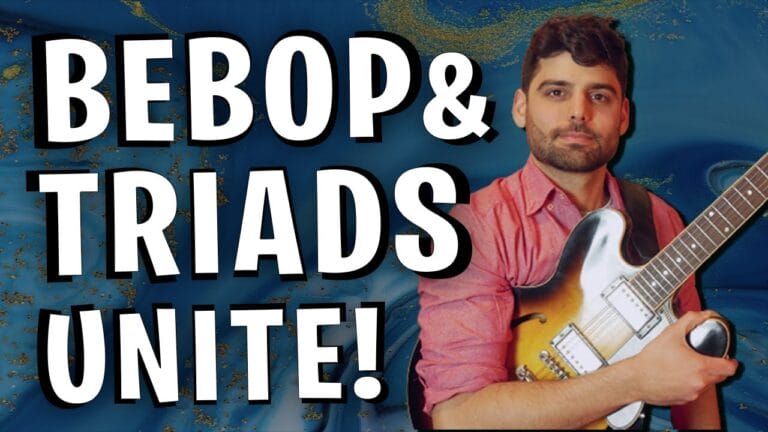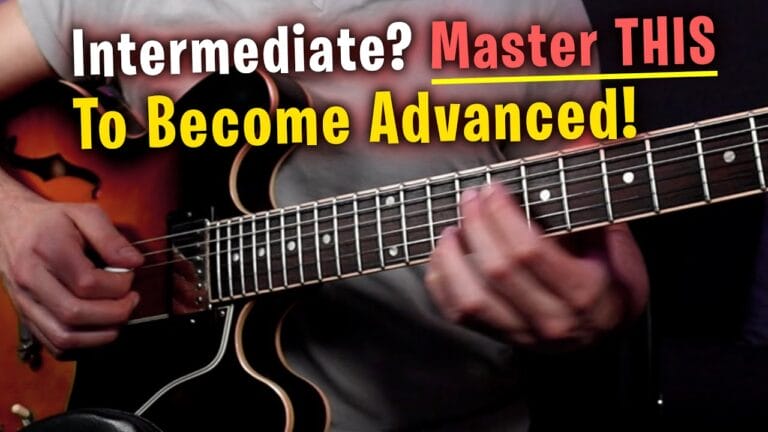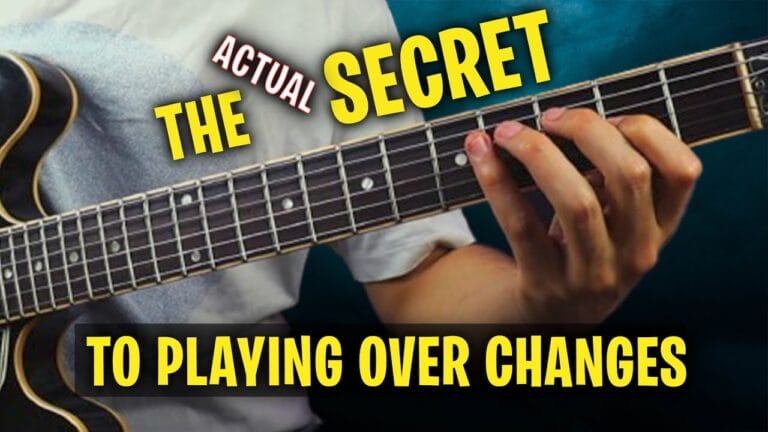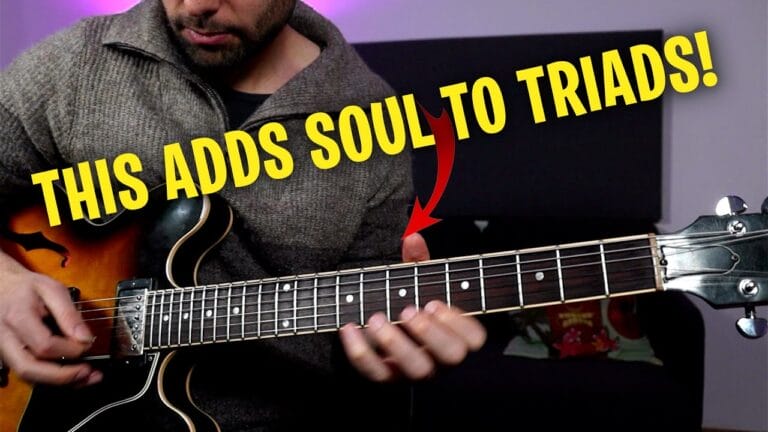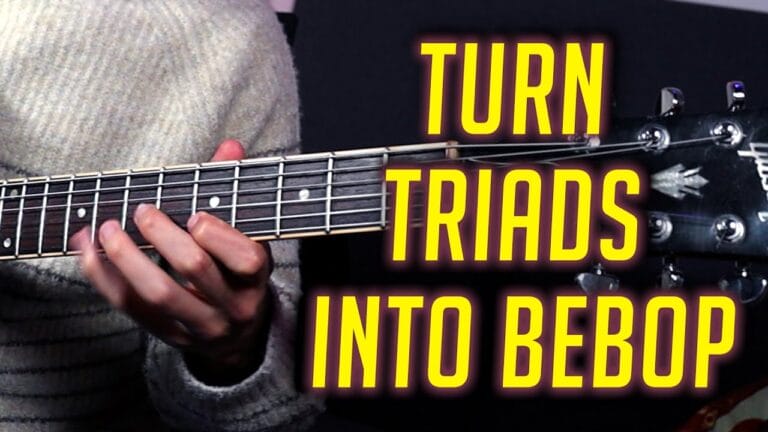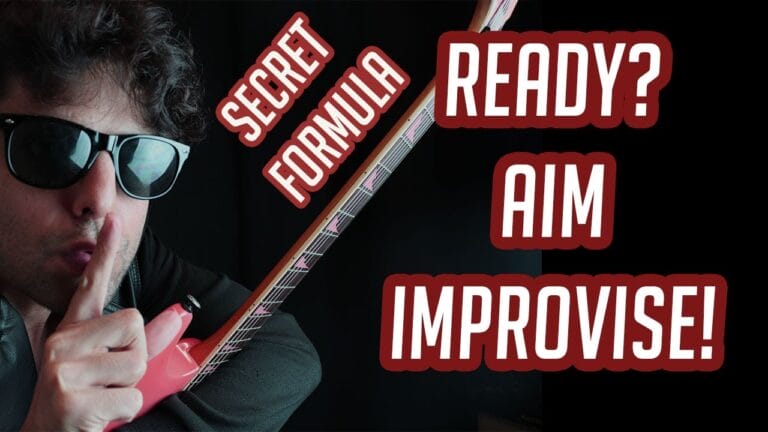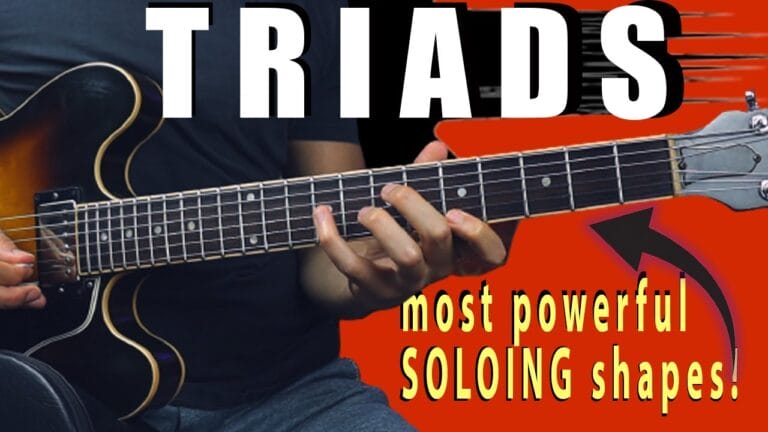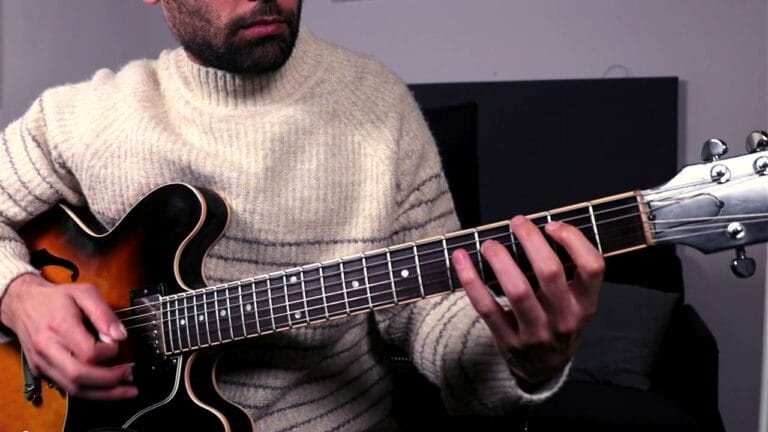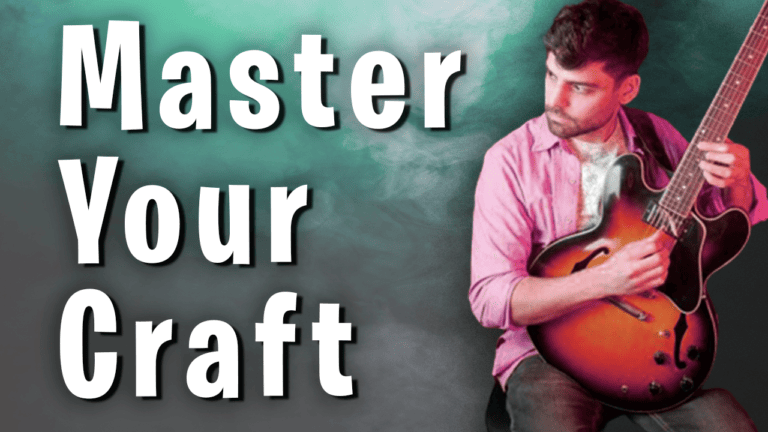Mastering Triad Forms on the Guitar
Unlock the Secrets of Triad Forms on the Guitar: A Comprehensive Guide
Triads are a fundamental building block of guitar music, and mastering them is essential for any serious musician. In this guide, we’ll explore the different forms of triads, the various inversions, and the many different ways they can be used in your playing.
Triad Forms
There are four main forms (types) of triads: major, minor, augmented, and diminished. Each form has its own unique characteristics and can be used to create different types of music.
- Major triads have a bright, happy sound.
- Minor triads have a sad, contemplative sound.
- Augmented triads have a tense, dreamy sound.
- Diminished triads have a dark, unstable sound.
Triad Inversions
Inversions are when the notes of a triad are rearranged, and they can be used to create interesting harmonies and chord progressions as you start voice leading from one chord to the next, voice leading is a core element in any improviser/composer’s tool kit.
- Root position triads have the root note as the lowest note.
- First inversion triads have the third as the lowest note.
- Second inversion triads have the fifth as the lowest note.
Triad Progressions
Voice leading different Triad progressions is a powerful tool for creating flowing and expressive music. By voice leading triads intelligently, both melodically and harmonically, you can create a sense of tension and release, and build powerful melodies and harmonies.
Some common triad progressions include the I-IV-V progression, which is used in many pop and rock songs, and the ii-V-I progression, which is used in jazz and other styles of music.

Triad Exercises
Practice is essential for mastering triads, and there are many exercises you can use to improve your technique.
One effective exercise is to play through each form of triad in all inversions, moving up and down the fretboard. This will help you to become familiar with the different shapes and sounds of the triads, and will improve your finger strength and dexterity.
Another good exercise is to practice playing triad progressions, focusing on the movement between chords.
Triad Theory
To truly master triads, it’s important to have a solid understanding of the theory behind them. This includes understanding the relationships between the different notes of a triad, and how they interact to create different sounds and harmonies.
Some key concepts to understand include chord function, chord substitutions, and voice leading.
Triad Fingerings
Different fingerings can be used to play triads, and it all depends of the strings you decide to express triads on.
Finally, It is also very important to have a good visualization of the triads on the fretboard, and to really have a complete system to master that make sure to check out The Galactic Modern Guitar Series



